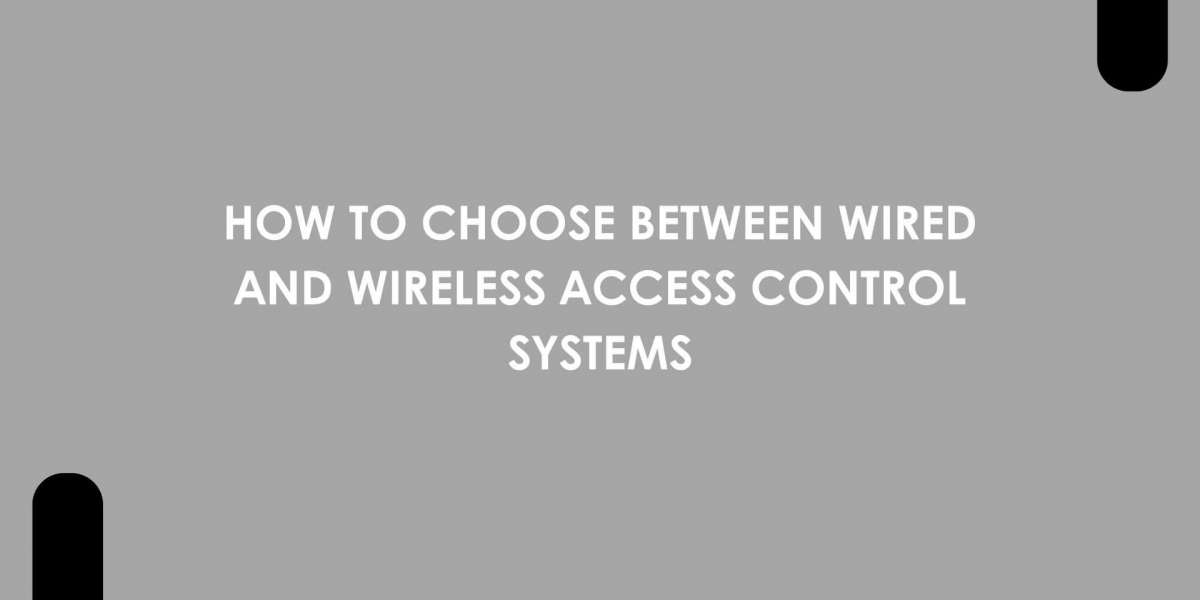Choosing the right access control system is a critical step in securing your building or AV environment. One of the most important decisions in this process is whether to install a wired or wireless solution. Each option has its own advantages, limitations, and ideal use cases. Knowing how to evaluate your needs will help you make an informed decision and ensure long-term performance, security, and ease of use.
At XTEN-AV, we help integrators and business owners design smart, scalable AV and security solutions. Whether you are installing a new system from scratch or upgrading your current setup, understanding the differences between wired and wireless access control systems is key to making the right choice.
What Is an Access Control System
An access control system regulates who can enter specific areas within a facility. It replaces or supplements traditional lock and key systems with digital credentials such as key cards, mobile passes, PIN codes, or biometrics. In modern buildings and AV-equipped spaces, these systems are often connected to broader networks, enabling automation, monitoring, and integration with audiovisual systems.
The delivery of access control can be handled through wired or wireless connections between components like door readers, locks, and control panels.
What Is a Wired Access Control System
A wired access control system connects all devices—such as card readers, door locks, and control panels—using physical cables. The data and power are transmitted over these hardwired connections.
Key features of wired systems include:
Consistent and stable communication
Greater bandwidth for data-heavy applications
Easier integration with high-security environments
Wired access systems are commonly used in permanent structures like corporate offices, hospitals, banks, and universities where reliability and long-term infrastructure are top priorities.
What Is a Wireless Access Control System
A wireless access control system connects devices using wireless communication protocols such as Wi-Fi, Bluetooth, or RF. These systems are often battery-powered and use encrypted signals to exchange information.
Key features of wireless systems include:
Faster and less invasive installation
Flexibility for temporary or changing layouts
Ideal for buildings with limited wiring options
Wireless access control is often used in smaller offices, historic buildings, remote sites, and temporary event spaces.
Wired vs Wireless Access Control System: A Comparison
Let us break down the pros and cons of each system to help you choose the best fit.
1. Installation and Setup
Wired:
Requires cabling for power and data
May involve wall drilling and infrastructure work
Longer setup time but offers lasting reliability
Wireless:
Quick to install with minimal disruption
Great for retrofitting older buildings
Requires proper signal strength and placement
Verdict:
Choose wireless for speed and flexibility. Choose wired for new builds or permanent spaces.
2. Reliability and Stability
Wired:
Extremely reliable
Not affected by wireless interference
Ideal for high-security areas
Wireless:
Depends on network strength and battery life
Susceptible to interference from walls or devices
Performance can vary with location
Verdict:
Wired systems win in terms of reliability and signal consistency.
3. Security
Wired:
Offers robust security
Less vulnerable to hacking or signal jamming
Easier to manage in closed networks
Wireless:
Can be secure with proper encryption
Must be updated and monitored regularly
Risks increase with poor configuration
Verdict:
Wired systems offer stronger inherent security. Wireless systems require careful planning.
4. Cost and Budget
Wired:
Higher upfront cost for materials and labor
Long-term savings due to minimal maintenance
Wireless:
Lower installation cost
Potential battery replacement and software updates
Verdict:
Wireless may be better for smaller budgets or temporary setups. Wired systems offer better value over time for larger installations.
5. Scalability and Flexibility
Wired:
More difficult to expand once installed
Requires rewiring for major changes
Wireless:
Easily scalable
Devices can be moved or added without new wiring
Verdict:
Wireless systems are better suited for growing businesses and spaces that change frequently.
Factors to Consider Before Choosing
Here are some questions to help you make the right decision:
Is the building already under construction or completed?
Wired systems are ideal during the construction phase. Wireless is better for retrofits.Do you need the system in a permanent or temporary space?
Wired suits long-term installations. Wireless is great for short-term or mobile setups.What level of security do you require?
If you are managing sensitive environments like data centers or government buildings, go for wired. For general office access, wireless can be sufficient.How important is remote management?
Wireless systems often offer easier cloud connectivity and app-based control, making them attractive for smaller teams.Are you planning future expansions?
If flexibility and scalability are key, wireless gives you the edge.
How XTEN-AV Can Help
XTEN-AV simplifies the process of designing and choosing between wired and wireless access control systems. With our powerful design automation platform, you can:
Generate system diagrams with both wired and wireless options
Compare product specifications side by side
Plan for future expansion and upgrades
Document infrastructure and installation details for smooth deployment
Our platform helps AV professionals and system integrators save time and reduce errors while ensuring that the final solution meets the client’s needs precisely.
Final Thoughts
There is no one-size-fits-all answer when it comes to choosing between wired and wireless access control systems. The best solution depends on your specific needs, building layout, security requirements, and long-term goals.
A wired access control system is ideal for permanent, high-security installations with stable infrastructure. A wireless access control system is best suited for flexible, fast deployments where ease of installation and future growth are priorities.







